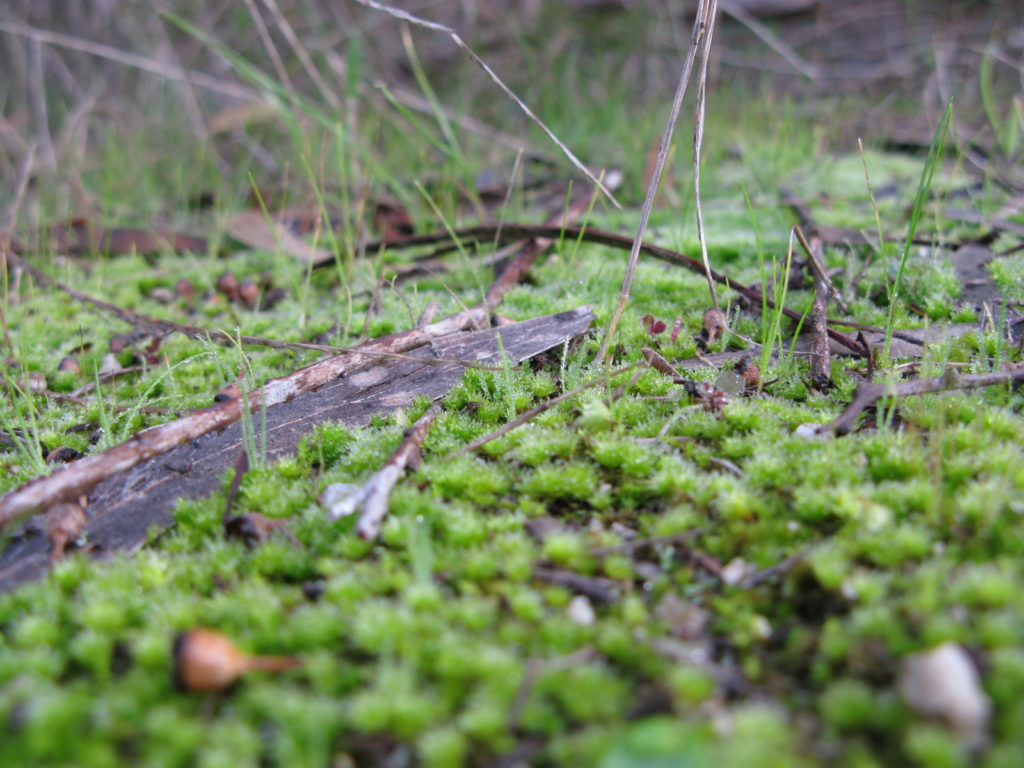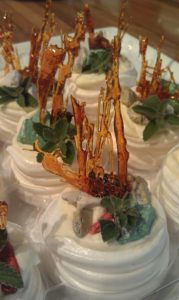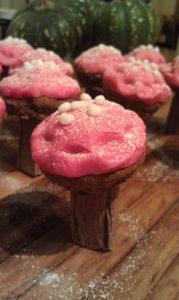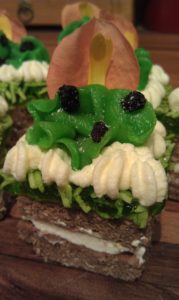What happens when science meets food meets art? You get sculptural meringues and splices — mud cakes, if you will — from our resident artist, Natalie Maras.

Soil crusts can take hundreds of years to become fully functioning, biodiverse communities. Like cake replicas, they can be destroyed in seconds.
“Don’t assume when you look out on an empty bit of land that there’s nothing there,” says Natalie Maras, artist in residence at the Australian National Herbarium, one of our natural history collections.
What is out there are soil crusts, communities of living organisms, like plants, fungi and lichens, that form a crust over the soil. Soil crusts anchor the soil in place, provide a home to critters and convert raw materials into forms more accessible by plants.
Such assemblages represent the perfect material for artists with a botanical bent and Natalie has developed an affinity with the subjects of her artistic residency.
“Soil crusts live at the interface of soil and air. They exist between two worlds, like the artist working in science. Unacknowledged, unrecognised, unknown, they perform a vital creative function. Their story is my story.
“One of my favourite experiences here involved kneeling in a drain with a scientist. We passed a hand lens between us to observe, and delight at, tiny Endocarpon fungi as people walked by not noticing us. This residency has taught me there is so much I had never looked for and never seen and how much artistic and scientific endeavour have in common.”
Now a full time professional artist, Natalie sees the role of an artist in science to view things in a different way.
“Botanical art has a long tradition, it’s centuries old. But photography and digital imaging have somewhat satisfied the need for artists to accurately record plant specimens. Today we can afford to bring an artist into a scientific space and just see what happens.”
In delicious happenings, throughout her residency Natalie has won over her science colleagues with sculptural cakes and other treats inspired by soil crusts.
- An original take on an old Australian favourite. Natalie has reimagined a natural soil crust assemblage of twigs, pebbles and bryophytes. She has replaced the inedibles with crunchy pulled toffee, luscious chocolate rocks and a zing of mint. The condiments nestle in a bed of fresh cream, which she imagines represents mycelium rich soil.
- Agaric is an unmistakably decorative fungus. In this dessert, Natalie uses Flake chocolate bars as a stem before adding a cap of sponge with a dollop of ganache. She sprinkles pink royal icing with sugar to suggest the distinctive texture of the fungus.
- Liverworts are small spore-producing plants that grow on the surface of the soil. This delicious version is actually comprised of a ‘soil’ layer with chocolate slice and ‘large filamentous cyanobacteria’ made with lime jelly and coconut.
Natalie’s soil crust-inspired sculptures and drawings will be on show during the Interface exhibition at the Australian National Botanic Gardens in Canberra from 11 November to 6 December 2015.
Video credit: Natalie Maras/Silver Dory Productions
This work was produced by Natalie Maras during her time working as Artist-in-Residence in the CSIRO Australian National Collections in 2015.





Pingback: Science+Food+Art: The tough life of a soil crust – CSIRO blog | maxb0x
10th November 2015 at 8:06 pm
Brilliant .. love the connections of Food, Science & Art
10th November 2015 at 4:10 pm
Absolutely fascinating and beautiful! Thanks for posting.
David Suzuki used to tell government folks wanting to “develop” so-called undeveloped land, “Leave it alone; for the creatures living there, it’s already fully developed!”.
10th November 2015 at 11:41 am
I love this – cryptogamia don’t get enough press! What a wonderfully creative way to get people to notice the unnoticed!